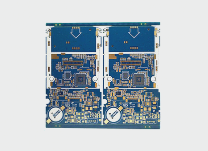Understanding Resistors in PCB Design
Resistors are vital components in electronic circuits, serving to control the flow of electrical current. They are essential for limiting current, dividing voltage, and adjusting signal levels within a circuit. Let’s delve deeper into the world of resistors and their significance in PCB design.
Resistors Overview
Resistors are passive components that impede the flow of electrons in a circuit. They are crucial for maintaining the stability and functionality of electronic devices. The resistance of a resistor is measured in Ohms, symbolized by the Greek letter omega (Ω).
Resistor Symbolism
The symbol for resistors features two terminals at each end, denoting its two-terminal nature. There are universal and American symbols used to represent resistors in circuit diagrams.
Figure 1: Resistor Symbols

Installation Methods
Resistors can be installed using two primary methods: through-hole technology (THT) and surface-mount technology (SMT).
Through-hole Technology (THT)
- THT resistors have long leads for insertion into PCBs or breadboards.
- They are ideal for prototyping due to their ease of use.
- Offer robust connections but require more space.
Figure 2: Through-hole Resistor

Surface-mount Technology (SMT)
- SMT resistors are compact components directly mounted onto PCB surfaces.
- Efficient for high-volume production processes.
Figure 3: Surface Mount Resistor

Decoding Resistor Values
Deciphering resistor values is crucial for circuit design. PTH resistors use color codes, while SMD resistors employ a value-marking system to indicate their resistance value.
Color Band System
The color bands on PTH resistors signify the resistance value, tolerance, and multiplier.
Figure 4: PTH Resistor Color Bands

Four-Color Band Resistor
- First two bands indicate significant digits of resistance.
- Third band represents a multiplier for the resistance value.
- Fourth band denotes the tolerance level.
Figure 5: The Four-Color Band Resistor

Understanding Different Types of Resistors
When dealing with resistors, you may come across five- or six-band variations.
- Five-band resistors contain an additional band between the first two and the multiplier band, offering a wider tolerance range.
- Six-band resistors, similar to five-band ones, include an extra band at the end indicating the temperature coefficient, showing how resistance changes with temperature.
Deciphering Resistor Color Bands
Decoding Through-Hole (THT) resistors is made simple with a color code table, as illustrated in Figure 6 below:

Figure 6: Color Code Table for Resistors
To interpret the first two bands on a resistor, match their colors with the corresponding values in the table.
Let’s take the resistor shown in Figure 5 as an example:
- The first band, yellow, corresponds to the value 4.
- The second band, violet, corresponds to the value 7.
- The third band, red, indicates a multiplier of 10² (100).
- The fourth band, gold, signifies a tolerance of ±5%.
- Hence, the resistor has a value of 4700Ω with a tolerance of 5%.
Surface Mount Device (SMD) resistors are labeled differently, with markings commonly found on components like the 0603, 0805, and 1206 packages.
SMD resistors typically use two labeling systems:
- E24: Numerical markings only.
- E96: A combination of numbers and a letter.
Understanding E24 Markings
The E24 marking system, akin to the color-band system for Through-Hole resistors, uses the first two digits for significant values and the third digit as the multiplier.
Explore this system further with Figure 7 below:

Figure 7: E24 Marked Resistors
- Resistor 104 denotes 100kΩ.
- Resistor 105 denotes 1MΩ.
- Resistor 205 denotes 20MΩ.
- Resistor 751 denotes 750Ω.
- Resistor 750 denotes 750kΩ.
Cracking the Code of E96 Markings
The E96 system utilizes three characters: the first two digits represent the resistor value, and the final letter indicates the multiplier. Refer to the tables for determining the resistor’s value.


